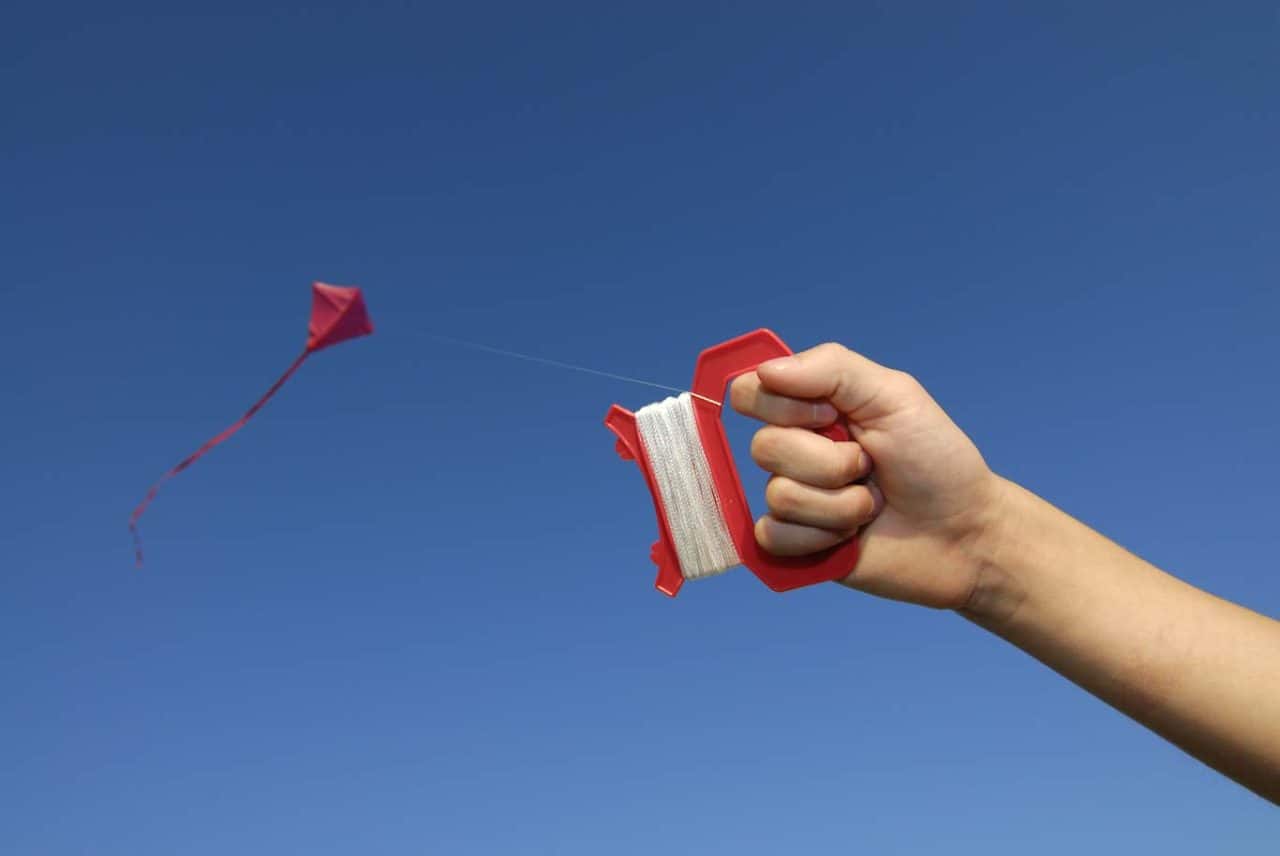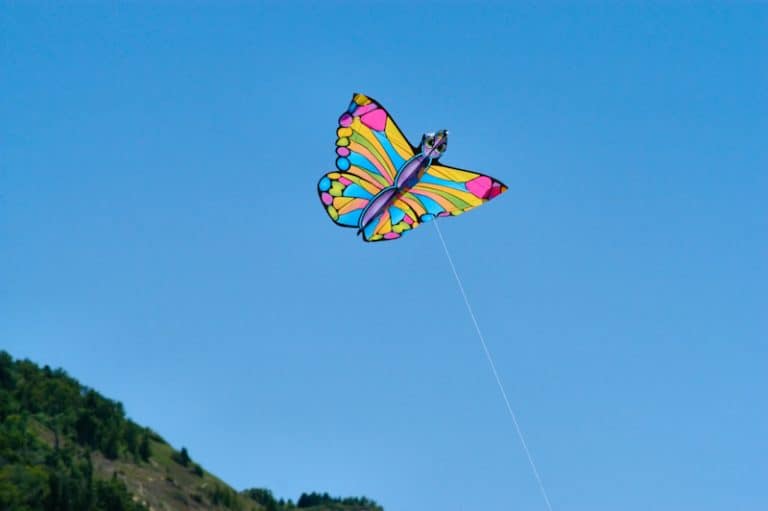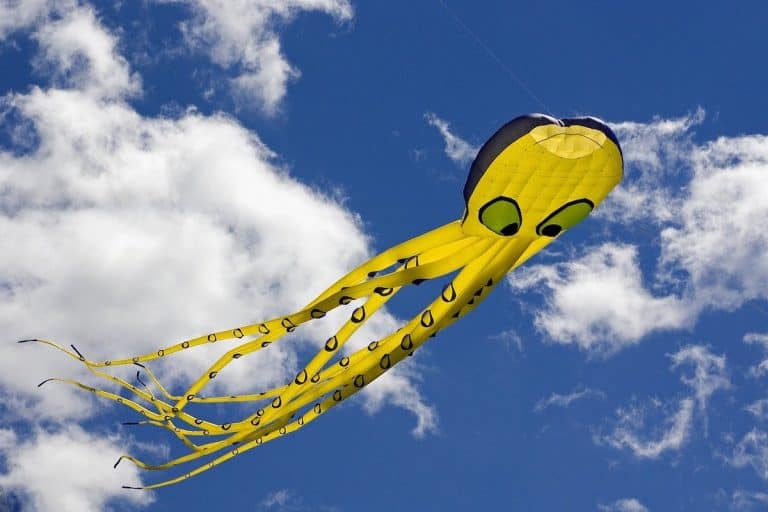This Is How Long A Kite String Should Be
Kite strings connect the kiting operator to the kite. If you’re in the market for a kite, you may be wondering how long long a kite string should be. This article takes an in-depth look at kite strings and their preferred length.
Stunt kite operators should opt for shorter strings of 50-100 feet. Those who require a larger powerful kite should opt for longer strings of 75-150 feet. In many areas, it is illegal to fly kites higher than 150 feet.
A Little History Behind The Kite
Kites originated from Asia; however, the exact location remains a mystery. A cave painting in the Mesolithic period is the oldest illustration of kites. It is dated from 9500-9000 BC and is located on Muna Island, Indonesia (Source).
The kite in the cave painting represents the kagati kite used to date by the Muna people. The kite materials included forest tuber, bamboo skin, and pineapple fiber as the rope (string for modern kites).
According to the Chinese, kites were invented during the 5th century BC. The uses for the kites ranged from measuring distances, lifting men to military communication. Materials were easily accessible, including resilient bamboo and high-strength silk for lines.
How Much String Do You Need To Make A Kite?
Lines were, and still are, a crucial part of kites. A line of 30 feet is considered adequate for kids with small kites. Fifty feet is sufficient for adults with large kites, and 100 feet is excellent for inland areas.
The kite line required by power kite fliers differs from that needed by stunt kite fliers. Power kite fliers go for longer lines, while stunt fliers go for shorter ones (Source).
Longer lines on a kite mean a longer arc which translates to a larger power window that creates more power to be used by the kite. The length used by such fliers ranges from 75′-150′. Stronger winds will require shorter lines for them to control larger kites.

More On Kite String
Shorter lines assist stunt kite fliers in improving their performance. Turns made are quicker and require minimal room to accomplish. Speed and response to the controls become faster and more precise. The recommended length for their lines is 50′-100′.
Historically, meteorologists and scientists have achieved high-altitude kite flights using long lines. In 1919, a meteorological station at Lindenberg reported a height of 3,955ft using a 20km line. In 2014, Robert Moore, together with his team, flew a 12sq meter kite using 12,400 meters of line to 16,009 feet (Source).
How Do You Determine The Length Of A Kite Line?
Kite lines come in different varieties. Their lengths, weight, diameter, and size differ. Picking the right line is just as essential as choosing the right kite. Picking a line that’s too small could result in a broken line which could, in turn, lead to a damaged or lost kite. A line that’s too large could cause one to lose control due to poor response (Source).
When determining length, you should consider the type of kite used and the purpose for flying. Some lines stretch and rebound while others stretch and don’t rebound should also be factored in when picking kites.
Line length will have a direct impact on kite performance. Longer lines will have more drag and stretch, slowing down kite response, while shorter lines have a higher response.
Common uses for the kite include air kites, water kites, and gas kites, among others. When the application differs from the common purpose, specialized lines are required. When certain records are set under controlled conditions, competitors (kite operators) pick lines with high specificity and fewer safety factors. For example, E.D Archibald was the first to use piano wires on kites (Source).
What Is The String Of A Kite Called?
The string on the kite is known as the kite string or kite line. These lines connect the kite to the person operating or to an anchor. In kite surfing, they are also known as flying lines. They make sure the wind fully powers the wing (Source).
Kite lines for toy kites differ from lines that tug sporting kites. Kites lines used for sport kiting require very minimal stretch, while those used for recreation should be able to stretch. For all these kite lines, however, proper maintenance is necessary.
Successful kiting depends highly on line specifications and proper handling. Kite lines that are misused and abused may result in injuries to properties and persons. To prevent accidents such as cuts and burns, toy kites used by children should have their lines made out of cotton twine that is soft and fuzzy.
Kite line integrity is affected by knottings, reeling, wear, repeated use, damaging behavior while in use, and chemical contact. Actions you should take include fluffing off knots when they occur; wrapping up lines when a kiteboarding session is over; and replacing lines once they tear (Source).
How Do You Set The String On A Kite?
Kites are a source of great entertainment for both adults and children. Kite line assembly will be required for kites that come with the string not attached. One will need to make holes, thread the line through the holes, and secure it by tying a knot.
A long string should then be attached to the loop created. It will form the flying string (Source).
The holes pierced should be two and should be opposite each other. The other two holes should be 18cm away from the initial holes. Kite strings that are purpose-made should be used as they will withstand gusts of wind.
Can You Use Fishing Line For Kite String?
Safety is an essential aspect of kite flying. Precaution, therefore, is necessary when handling kites. For example, while you can use piano lines during particular applications, you should avoid them in sports and recreational kite flying. It is because fishing lines are thin and are also stretched and tend to break easily (Source).
It would be best if you also avoided metal wires. It is because of their ability to conduct current and static electricity. Metal wires should only get used if approved by scientific professionals and industrial engineers. In order to minimize accidents, you must wear protective clothing such as goggles and gloves.
You should also avoid fishing lines and steel lines. They tend to recoil when they break. As a result, one may injure themselves and those around them. Also, these lines stretch before breaking.
All of the above materials expose others around the kite flyer to risks. Imagine a falling and flailing steel line hitting a bystander or damage to wildlife from lost fishing lines.
What Is Kite String Made Of?
Kiting lines are made of different materials. These include cotton, silk, nylon, and polyester. There are three types, however, that are commonly used. These are nylon, cotton, and polyester lines.
In earlier times, the Chinese utilized silk while the Japanese utilized cotton for their kite lines. People also used braided cotton lines in India. These kites were often used during fighting competitions.
The various kite line types have multiple characteristics that make them suitable for their purposes. Cotton lines, for example, were the original lines and can be braided or used as single lines. While they are cheap, they have lost popularity because of their heavy nature and the ease with which they tangle.
Nylon lines are standard with single line kites. They are relatively cheap, durable, and strong. However, these lines are known to untwist and tangle with time.
Polyester lines are more expensive. Fortunately, they are stronger, thinner, and lighter.
Summary
There are a variety of kite sizes in the market. To determine the length, one should consider the kite size, wind conditions, and kiting activity. You should avoid flying lines and metallic lines as they are not ideal for kiting and may result in accidents.
Sources
- Wikipedia, https://en.wikipedia.org/wiki/Kite Accessed March 17, 2022
- A Wind of Change, http://www.awindofchange.com/lessons/lesson1-4.html Accessed March 17, 2022
- Wikipedia, https://en.wikipedia.org/wiki/Kite_line#Kite_lines_for_high_altitude_attempts Accessed March 17, 2022
- A Wind of Change, http://www.awindofchange.com/lessons/lesson1-4.html Accessed March 17, 2022
- Wikipedia, https://en.wikipedia.org/wiki/Kite_line#Kite_lines_for_specialized_applications Accessed March 17, 2022
- Wikipedia, https://en.wikipedia.org/wiki/Kite_line Accessed 18th march 2022
- Wikihow, https://www.wikihow.com/Tie-a-Kite-String Accessed March 18, 2022
- Wikipedia, https://en.wikipedia.org/wiki/Kite_line#Safety_for_kite_lines Accessed March 18, 2022






